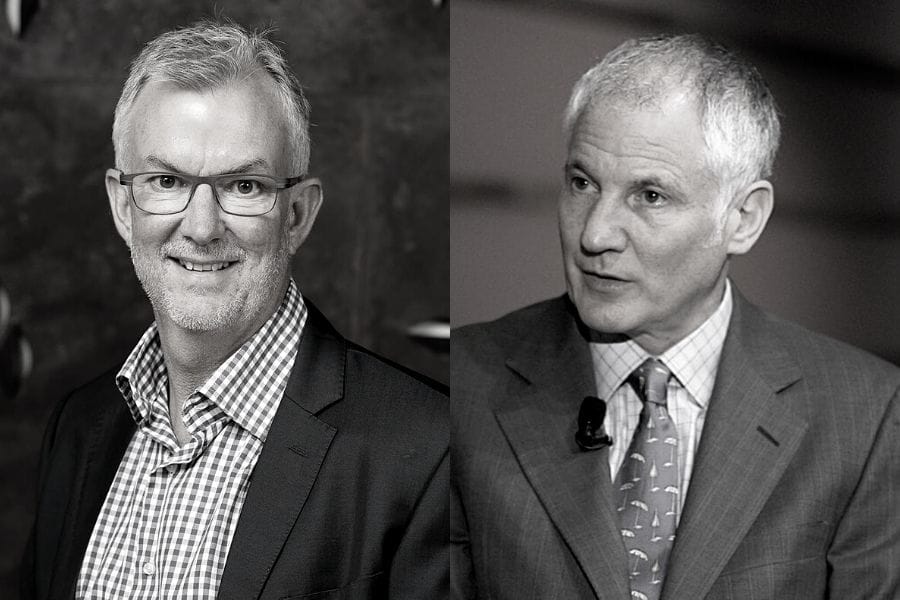Bridgewater’s Carsten Stendevad and PGGM’s Jaap van Dam discuss the need for more clarity and better communication in sustainability and explore how investing for impact is re-shaping investment strategies.
ESG investment needs to answer two key questions, says Carsten Stendevad, co-CIO for sustainability at Bridgewater, the world’s largest hedge fund.
Speaking at Sustainability in Practice he says those questions are: does ESG investment impact financial performance – and does it have an impact on real world sustainability outcomes?
Only clear communication on these two critical points (and the answers may well be negative) will help counter growing criticism that the financial markets should not be tasked with solving the problem of climate change.
“Critics are right in pointing out that too often ESG puts forward simplistic arguments. We need to strengthen our approach,” he said.
He said ESG investment does not always provide better returns and impacts. In some areas, ESG investment does improve returns and in some cases the impact is important, but in other scenarios the impact is marginal.
“It may even be negative and being honest and clear about this is critical for ESG investment,” he told online delegates comprising some 250 registered asset owners representing a collective $13 trillion AUM from 33 different countries.
He said when ESG integration doesn’t boost returns, important questions about investment objectives are imperative. If investors are only integrating ESG for risk and return, they don’t have to get involved in “knotty” arguments about justifying ESG. In contrast, investors with non-financial objectives need to state them clearly.
Fellow panellist Jaap van Dam, director of strategy at Dutch pension asset manager PGGM agreed that ESG investment needed to be clearer about its purpose. He said the concept of purpose often gets a mixed response and ESG meets resistance in jurisdictions where fiduciary duty is a primary concern like the US, and to an extent, the UK.
He also counselled on the importance of highlighting ESG’s “journey to improve,” noting that compared to the past when investment was wholly two dimensional the focus on risk, return and purpose is now taking on more weight in some portfolios.
It led the conversation to so-called three-dimensional portfolios – an area Bridgewater has shifted to now, where impact is considered as deeply and rigorously as risk and return. Stendevad urged investors to build out their investment process – like they have in the past around risk – to capture, manage and measure impact. It involves new processes comprising data collection and portfolio construction, he said.
“At Bridgewater we are committed to this journey to build out a new dimension. Only when you have done this can you answer questions around returns.”
Stendevad said that it was important not to have theoretical arguments around what is possible. Instead, investors should do the work, build the processes and spend time putting together portfolios first.
Van Dam said that for many investors sustainability is not first and foremost when they are designing portfolios but more an afterthought, adding “this is something we have to change.” It is difficult to build sustainable portfolios with historical portfolio construction tools, however.
In three-dimensional portfolios impact sits alongside risk, and all types of capital can be placed on an impact spectrum, said Stendevad.
At one end impact investment can reveal additionality and causality attracting different types of capital like VC and green tech. At the other public, liquid market investors can also invest for impact.
“It is not just high-risk capital that is needed,” he said. Impact is a spectrum and all capital plays a role.
He added that investing in public markets for impact allows investors to support companies that may not be sustainable today but are on a journey. Active owners need to get on a journey with companies to tilt impact where it is most needed, he said.
The conversation touched on the importance of investor engagement and how it should stretch beyond just corporate engagement to reach new parts of the financial system. For example, it is important to support different parts of the data ecosystem to improve data to feed into decision making. Bridgewater uses data from between five and 10 providers, picked from an initial pool of around 40 based on their ability to answer key questions around measuring impact. Panellists concluded that data on modern slavery is particularly poor.





excellent discussion on this topic. well worth watching the video.